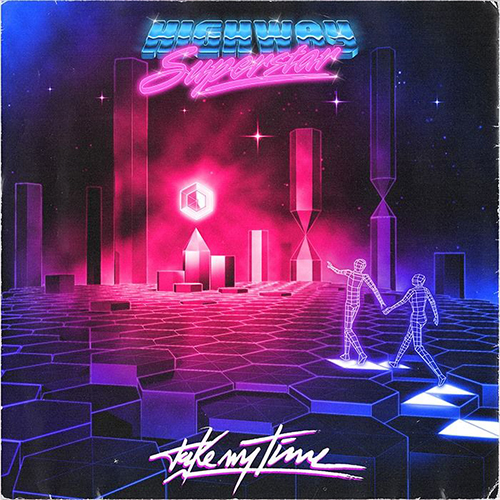Questions and answers with John Piper
Interactive Bible study with John Piper
Daily devotional with John Piper
Classic sermons from John Piper
Questions and answers with John Piper
Interactive Bible study with John Piper
Daily devotional with John Piper
Classic sermons from John Piper
Most people in the world have no experience of lasting joy in their lives. We’re on a mission to change that. All of our resources exist to guide you toward everlasting joy in Jesus Christ.
Roland Gerrits / Anefo, CC0, via Wikimedia Commons
Professor, Bethlehem College & Seminary
In the early seventies, the Watergate scandal shocked the nation. One of the men involved was Chuck Colson, who later pled guilty and served time in federal prison. During this season, Colson came to faith in Jesus and converted to evangelical Christianity. In 1976, Colson published Born Again, which chronicles the events leading to his conversion and explains his radical life change. The book was an instant bestseller, making Colson one of the most influential evangelical leaders of his era.
Also in 1976, a dark-horse candidate from Georgia named Jimmy Carter won the Democratic presidential nomination, and then narrowly won the general election. Carter was barely known nationally, so his victory garnered even more attention. During his campaign, Carter professed to be a “born-again Christian.” Most political pundits and media outlets had no idea what that meant.
As the phrase grew in the public consciousness, many Americans assumed that born-again Christianity was a new Christian sect. However, as the media and pollsters investigated, they discovered the phrase “born again” was simply used by ordinary evangelical Christians to describe the supernatural transformation that people experience when they convert to Christianity.
Evangelical Christianity was certainly not new, but when the phrase entered mainstream America, it boosted evangelicalism’s profile. Evangelicalism’s enhanced notoriety and influence prompted Newsweek magazine to proclaim that 1976 was “the year of the evangelical.” The next year, world-renowned evangelist Billy Graham published How to Be Born Again. The book helped to reinforce the credibility of the phrase “born again” and, more importantly, it sent the message that genuine biblical Christianity was synonymous with “born-again Christianity.”
Some commentators asserted that the emphasis on born-again Christianity was an invention of the modern era. They claimed that the evangelical emphasis on the new birth was absent from most of church history. Evangelicals responded with Scripture.
Jesus said, “I say to you, unless one is born again he cannot see the kingdom of God” (John 3:3). The born-again experience is also known as regeneration. The apostle Peter asserts that this experience is made possible by the work of Christ (1 Peter 1:3). The apostle Paul also associates the new birth with salvation and the forgiveness of sins (Titus 3:4–7). Passages like these inspire an important question: How could detractors claim that born-again Christianity was a product of the modern era when the concept of the new birth so clearly comes from Scripture?
Most detractors would certainly agree that the concept of the new birth is indeed in the Bible, but they would also assert that the Christians of previous eras had a different understanding of the new birth than modern evangelicals do. They would argue that, for the bulk of church history, the moment of new birth was associated with infant baptism. In contrast, evangelicals associate the new birth with repentance and personal faith in Christ. Evangelicals believe that people are born again when they are converted to Christ.
It’s true that new birth was associated with infant baptism for much of history. It’s not true, however, that everyone in the early church taught the new birth that way.
In fact, several influential early-church writers believed that the born-again experience was associated with repentance, confession, and salvific faith. This includes the Epistle of Barnabas, Clement of Alexandria, Tertullian, Origen, and Hilary of Poitiers (see Gregg Allison, Historical Theology, 649–67). However, as infant baptism grew in popularity during the third and fourth centuries, the vital association between regeneration and faith was greatly de-emphasized. Many Christians during the Middle Ages presumed that they had already experienced regeneration as infants at their baptisms. Therefore, it seemed unnecessary to preach about the new birth in adulthood.
The Protestant Reformation brought a renewed focus on individual people believing the gospel, not merely participating in religious duties. The German equivalent of the term evangelical was coined by Martin Luther to describe the Protestant churches that exhorted their congregants to exhibit genuine faith in the evangel (the gospel).
The evangelical emphasis upon the new birth was later greatly promoted by Lutheran theologian Johann Arndt. In the early 1600s, Arndt penned True Christianity, which greatly emphasized the new birth and piety. The book was circulated across Europe extensively for more than a hundred years and was tremendously influential on many future preachers, including John Wesley and George Whitefield.
In the mid-eighteenth century, a series of powerful revivals swept through America, led by the preaching of men like Jonathan Edwards and George Whitefield. Their preaching emphasized the new birth and called people to repentance. These revivals gave birth to American evangelicalism, which would be an influential force in American society throughout the eighteenth and nineteenth centuries.
However, by the end of the nineteenth century, a fracture emerged among professing evangelicals between modernists and fundamentalists. The modernists denied Christian orthodoxy and sought to reinvent Christianity in the light of modern science. The fundamentalists intensified their commitment to Christian orthodoxy, but they also developed a militant posture toward culture. By the 1920s, these two groups were worlds apart.
After the modernist-fundamentalist break, the modernists repudiated the evangelical emphasis on the born-again experience, but many fundamentalists doubled down on its importance. They began describing themselves as “born-again Christians.” While the phrase would not enter the mainstream for several more decades, it gained momentum within some conservative Protestant circles during the thirties and forties.
In the 1950s, a young evangelist named Bill Bright founded Campus Crusade for Christ, which became the most influential campus evangelism ministry in the nation. Bright embraced the label “born-again Christian,” and by the early sixties, the new converts in his ministry were embracing the label too.
Another notable segment of evangelicals that embraced the label were the young adults being converted to Christ as part of the Jesus People movement of the late sixties. Then, Billy Graham began using the phrase “born again” extensively. Graham had been preaching since the 1940s, and he would occasionally use the phrase, but in the 1960s the born-again vernacular became much more prominent in Graham’s ministry. The events of the sixties put the phrase “born again” on the radar of nearly every American Christian. And the events of 1976 then put the phrase on the radar of every American.
Another interesting phrase that entered the lexicon, in time, was “born-again Catholic.” Being born again had typically been a marker of evangelical Protestantism, but soon even Catholics began reporting born-again experiences.
For various reasons, however, these people wanted to remain within their Catholic tradition. The number of self-proclaimed “born-again Catholics” has been modest since the 1960s, but the number nearly doubled from 2004 to 2016 (see Samuel Perry and Cyrus Schleifer’s “Understanding the Rise of Born-Again Catholics in the United States”). While it may appear that a genuinely born-again person can remain a devout member of the Catholic Church, there are some serious warnings to consider.
Also, by the late 1970s, the phrase “born-again” was being used (and misused) by Americans to describe any transformational experience, even if the experience was not directly related to Christ and Christianity. The phrase was so frequently used that when Bob Dylan described his own conversion to evangelical Christianity, he was reluctant to use the phrase “born again” because it was so “overused” (“John Lennon’s Born-Again Phase”). One prominent example of this was John Lennon calling himself a “born-again pagan.”
What, then, is a born-again Christian? Born-again Christians are those who believe the gospel, and so put faith in Jesus Christ for salvation, and have experienced the supernatural transformation often called regeneration. They have experienced a conversion from spiritual death to spiritual life. John Wesley described this experience as the “thorough change of heart and life from sin to holiness” (quoted in Thomas S. Kidd, Who Is an Evangelical?, 4).
This doctrine of the new birth took center stage in preaching among evangelicals and conservative Protestants in the modern era. This emphasis was not merely semantics. It inspired many to make the new birth essential in their lives and ministries, which in turn profoundly shaped the trajectory of American evangelicalism as it moved into the twenty-first century.
Over the last twenty years, the phrase has faded in popularity somewhat, but the doctrine of the new birth remains a crucial element of American evangelicalism’s history and legacy. Extra labels will come and go, but the doctrine — and more importantly, the experience, if genuine — will remain.
A digest from Desiring God
source














Post comments (0)